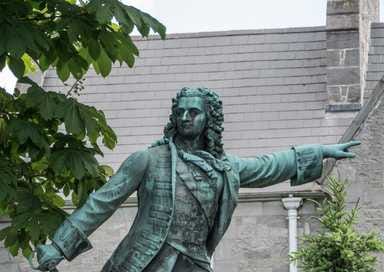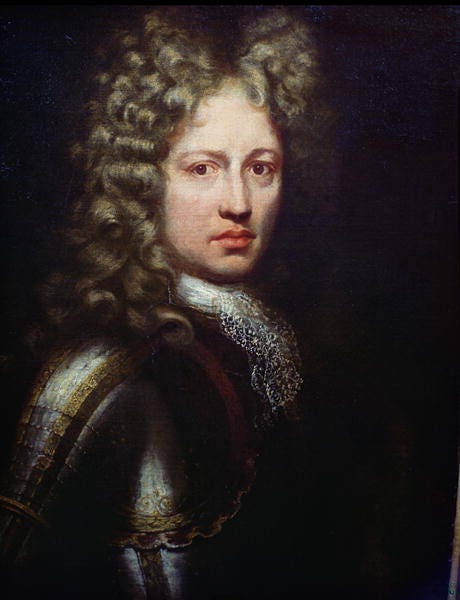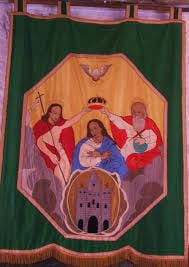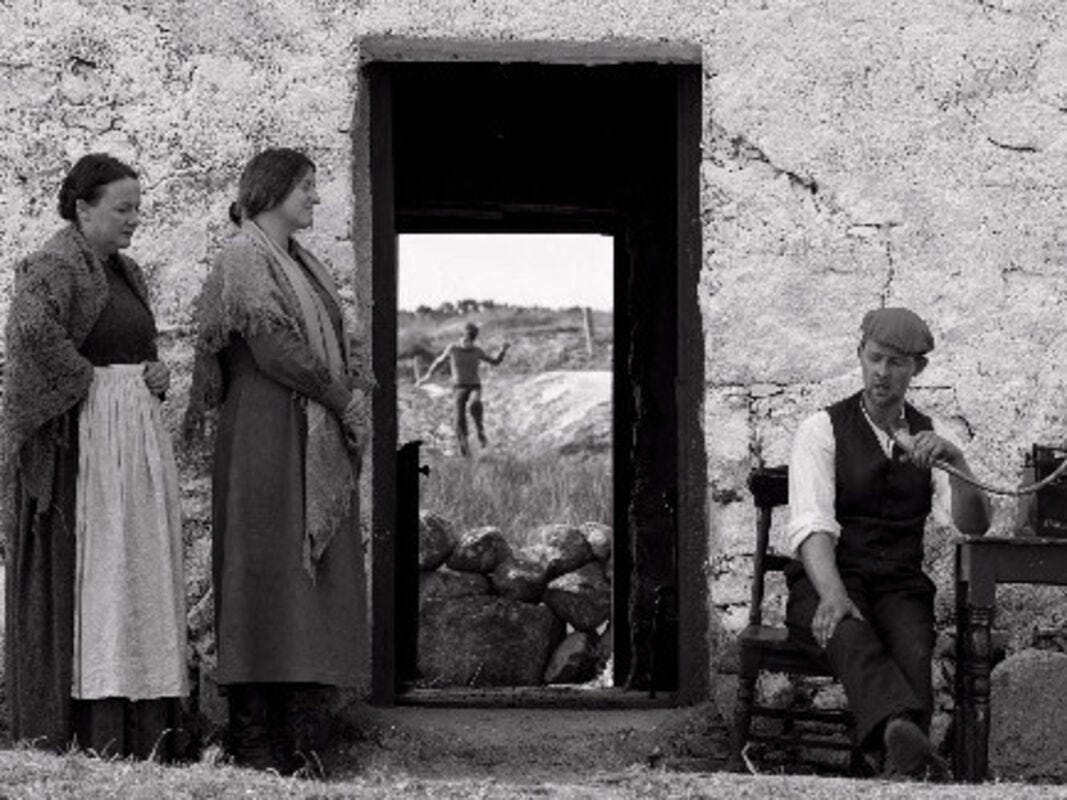The Ideals of Sarsfield's Jacobitism do not belong in Modern Ireland
The repatriation of Sarsfield's remains should spark further analysis of the place of Jacobite ideals in Irish history.
All those appreciative of Gaelic history and culture should naturally rejoice at the recent news that the remains of Jacobite hero Patrick Sarsfield have been found. Still, any attempt to claim him as a martyr for the modern technocratic Americanised-Ireland is blatantly deceitful.
Sarsfield died for the counter-enlightenment values of Irish Jacobitism: Éireannaigh aontaithe le Dia, rí agus tír (Irishmen united for God, king and country). The tripartite slogan neatly explains the Irish Jacobites’ support for the Stuart dynasty, particularly after James VII and II — Dia stands for their shared Catholic Faith, rí for their confederal kingdom and tír for the Gaels shared descent with the Milesian-descended kings. Learned Gaels of Sarsfield’s era clearly identified the Scottish King as being ‘taoiseach na nGaoidheal nglan’ (the chieftain of the pure Gaels) from the Stuarts’ lineage tying back to Dál Riada.1
One wonders how the average history-enjoyer in modern Ireland wraps their head around a worldview totally devoid of modern priors. Sarsfield’s Irish Jacobitism was in direct discord with the notion of a secular Liberal state — the policy of Lockean Whigs, and modern ‘conservatism’. Naturally, it also opposed the financial revolution of the Williamites post-1688 order, led by a ‘civil society’ conspiracy of Dutch bankers and elites like Francisco Lopes Suasso against the majority population — broadly representative of today’s Globalisation trend.
Instead of a codified secular ideology, like those mentioned above, the Jacobite themes which motivated heroes like Patrick Sarsfield to fight in the Battle of the Aughrim were of a more transcendental power. One contemporary, the famous poet Séamas Dall Mac Cuarta composed a poem arguing the Jacboite men of Aughrim had fought:
‘Fá aon chreideamh Phádraig is ar ghrá mhic na hóighe, le fírinne dár náisiún is do shásamh na córa’
(For the only faith of Saint Patrick and from love of the Virgin’s Son, with fidelity to our nation and to vindicate the right)2
This is an intensely Catholic worldview, where the battle for fatherland is conceived in civilizational terms. For Sarsfield and others, Jacobitism represented the union of an ethnos and a faith, against the disparate materialism of the Williamite regime. Gaels were to be granted autonomy as a civilised Catholic nation, a bulwark against Mammon and modernity and standing for Christ and civilisation.
The Jacobite poet of Limerick, John Lloyd, exemplified this worldview, ‘emphasising the importance of ethnicity, legitimacy and religion’ when he uttered ‘Is fada treibh Ghael ghroí ghlais – an gasra gliadh – gan reachta, gan rí dílis, gan Aifreann na gcliar’ (Long has the tribe of vigorous Gael Glas – the fighting band – been without laws, without a proper king, without the Mass of the clergy).3 There is a sense here as among other poems of the era that the Gaels as a Nation are destined to stand for God first and foremost. It certainly is interesting how intensely religious Irish revolutionism tends to be.
If Sarsfield and the Jacobites were to lose it would be the triumph of alien forces in Ireland, over the ancient native connection to Catholicism, in the eyes of contemporary poets. That native Catholicism, perhaps similar to the Idealist vision of Georgian Catholic poet Alexander Pope, who conceived of an organic chain of being which situates the poor peasant along with the noble classes in a divine ordering of society. With the eventual fall of Catholic-Gaelic Ireland, this holistic vision of the spiritual fatherland fell, as the country had lost its unity. The legendary Kerry poet Aodhagán Ó Rathaille particularly highlighted this decline:
‘In a poem beginning ‘monuarsa an Chárthfhuil tráite tréithlag’ (‘my grief that the MacCarthys are spent and exhausted’), he regretted that Ireland was now a country without a native ruling class (‘tír gan triath de ghrianfhuil Éibhir’); but he also wrote that it was a country without justice for the poor (‘tír gan chothrom do bhochtaibh’), a country in which the Catholic Church had been suppressed (‘tír gan eaglais chneasta ná cléirigh’), and a country that had been subjugated by English-speakers (‘tír do briseadh le foireann an Bhéarla’).4
With the vast majority of Irishmen today cut off from their native teanga agus nós it is understandably difficult to relate to the ideals of the Jacobites. Particularly the notion of supporting successive English Kings of the Stuart dynasty. The modern Derek irishmen looks at his cushy office job and americanised cultural world in the Free State and thinks ‘how could Irish people be so energised into defending Gaelic Catholicism, especially if it meant bowing to English rule!’. The answer to that confusion is that Sarsfield and the Jacobites were not fighting for a mere nominal ‘independence’ if it meant being beholden to Materialism and Mammon. Their conception of the National Struggle was intensely metaphysical, not procedural.
One could possibly go as far as to say that some of the Jacobites would take a Catholic Gaelic Éire, ultimately ruled by the Catholic Kings of England, than an officially ‘independent’ Secular Ireland, directly ruled by the Anglo-Dutch banking structure of 1688. It is certainly an historically situated movement, which inherently could not be resurrected in the modern age. Still, the ideals those men died for are eternally worthy of inspection.
Perhaps the best way for modern men to relate to and understand Sarsfield'-era Jacobitism is through the musical tradition of the time. A significant majority of our Sean-Nós (old-style) anthems come from the era of the Jacobite Wars, lamenting the decline of Ancient Gaeldom. While these ballads are inherently reactionary and nostalgic for a bygone, pre-modern Éire, and certainly clash against the sensibilities of modern ireland, they are expressed in a such poignant words and tunes that people cannot help but cling to them.
Mo Ghile Mear is a typical representative of musical Jacobitism. With harrowing sean-nós vocals, the song in its most common form today laments the failure of Bonnie Prince Charlie to re-catholicize Britain from the point of view of a personified Éire. Emanating from the same Milesian descent of James II mentioned earlier, the Stuart Pretender is seen as a gallant ‘laoch’ (hero) and ‘Shaesar’ (Caesar) for the Gaelic race.
He follows in the footsteps of our ancestors like Conchubhar, the ‘Taoiseach aoibhinn Chraoibhe an cheoil’ (The pleasant chieftain of the musical [Fenian] Branch). The tune argues that without a reactionary rebellion toward ancient our ways, like that of Sarsfield’s battles, those custodians of Gaelic civilization will whither away:
‘Táid fíorchoin uaisle ar uatha spóirt, Táid saoithe 's suadha i mbuairt 's i mbrón’
(The affable nobility are not bothered with sport, The learned and the cultured are worried and sad)
The strength of the song is in its reappropriation of the poetry of the Seán "Clárach" Mac Domhnaill, the great 18th Century Cork bard. The Jacobite sensibilities of Mac Domhnaill’s lament are transformed from the narrow elite audience of poetic scholarship to the roaring anthem that the song is. One can see the complexity of the song itself, often performed by isolated Sean Nós singing at the start, representing the isolation of nobility, to the roaring chorus of bodhrán rythyms and crowd singers.
The theme of the tension and decline of the old Irish Catholic nobility is even more pronounced in Cill Chais, another jacobite lament. Influenced by the previously mentioned Jacobite-era elite-bard Aodhagán Ó Rathaille, the lyrics portray the disregarding of the Castle and forestry of Kilcash, Tipperary as a metaphor for the abandonment of our heritage and tradition: ‘Tá deireadh na gcoillte ar lár, Níl trácht ar Chill Chais ná a teaghlach’ (The woods have all been cut down, There's no mention of Cill Chais or its people).
With modernity ‘Tá ceo ag titim ar chraobh ann’ (A dark cloud envelopes the country) and we have forever lost the idyllic symbiosis between people and our lands. The song closes off with a prayer to ‘Mhuire 's ar Íosa’ (Mary and Jesus) that the personified spirit of Éire will return to our consciousness:
‘Go dtaga sí arís chughainn slán…Go dtógfar an baile seo ár sinsear, Cill Chais bhreá, arís go hard’
(That she will one day return…this great home of our ancestors, The beautiful Cill Chais be restored)
While these two tunes bemoan a lost past, some rebel songs rally listeners into an all-out war on the present — like that of Sarsfield’s men. Óró, sé do bheatha 'bhaile is the most famous of this brand. Through its shanty-like chorus, the ballad builds to a triumphant rhythm — gathering steam and volume with each roaring verse, better fit for a march to battle than a nostalgic lament.
Originally another Jacobite rallying cry for Séarlas Óg (Bonnie Prince Charlie), it was re-appropriated by Pearse for the revolutionary period to be more explicitly nativist — rather than for the cause of the continental pretender. The version we all know today invokes Gráinne Mhaol, Mayo’s pirate queen against na Gallaibh (‘the foreigners’):
‘Gráinne Mhaol agus míle gaiscíoch, Ag fógairt fáin ar Ghallaibh.’
(Gráinne Mhaol and a thousand warriors... Dispersing the foreigners!)
While the tune remains wildly popular today due to its magnetic force, the lyrical theme is completely unassimilable into modern Ireland. Ironically the more modern version, written by Pearse, is even more offensive to modern ears. It replaces anti-Williamite patriotism with a clearly unified war-cry for the Gaels, stressing ‘Gaeil iad féin is ní Frainc ná Spáinnigh’ (Irish themselves, not French nor Spanish) and how ‘cuirfidh siad ruaig ar Ghallaibh’ (they will rout the foreigners!). Still, while this kind of patriotic jingoism is jarring some, it is still more translatable or comprehensible to the modern listener than pure Jacobitism.
The core of Sarsfield and his contemporaries Irish Jacobitism, through its union of Catholicism and ethnos, is untranslatable into modern Ireland. One wonders if Sarsfield was to see Modern Ireland he would once again exclaim, ‘Oh! that this was for fatherland!’5 — like when 20th Century Republican hero Dan Breen famously said of the fruits of his life fighting for freedom: ‘the revolution didn't work out,’ and ‘to get the government they have now, I wouldn't have lost a night's sleep.’6
Bibliography:
The Cambridge History of Ireland: Volume III, 1730-1880, edited by Kelly, James. Cambridge: Cambridge University Press, 2018.
Cambridge, p.39.
Ibid., p.38.
Ibid., p.39.
Ibid., p.38.
Davis, Thomas, The Spirit of the Nation, p.82.
Monagan, John S. "AN IRISHMAN'S DIARY". The Irish Times, Mon, Feb 24th 1997.





